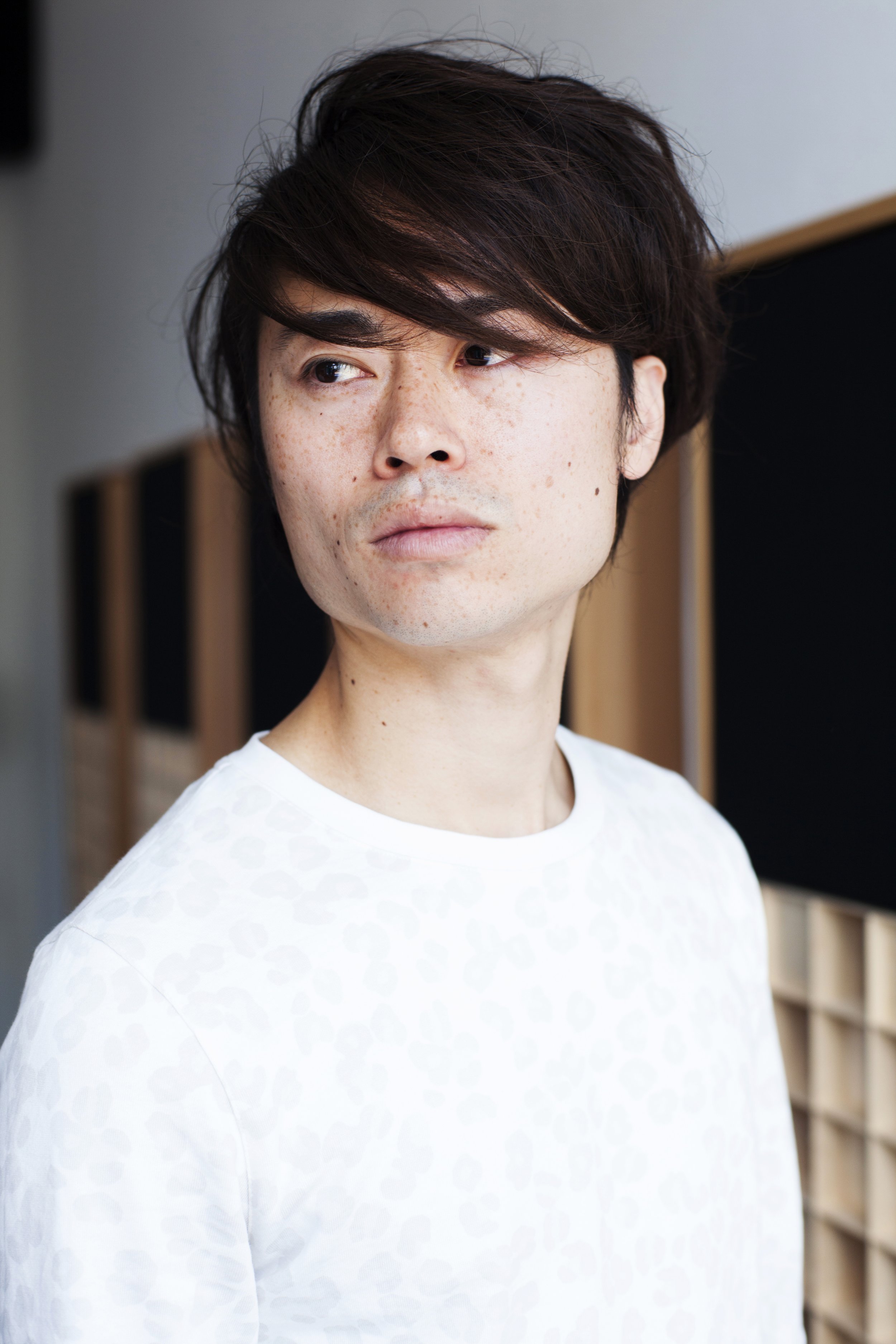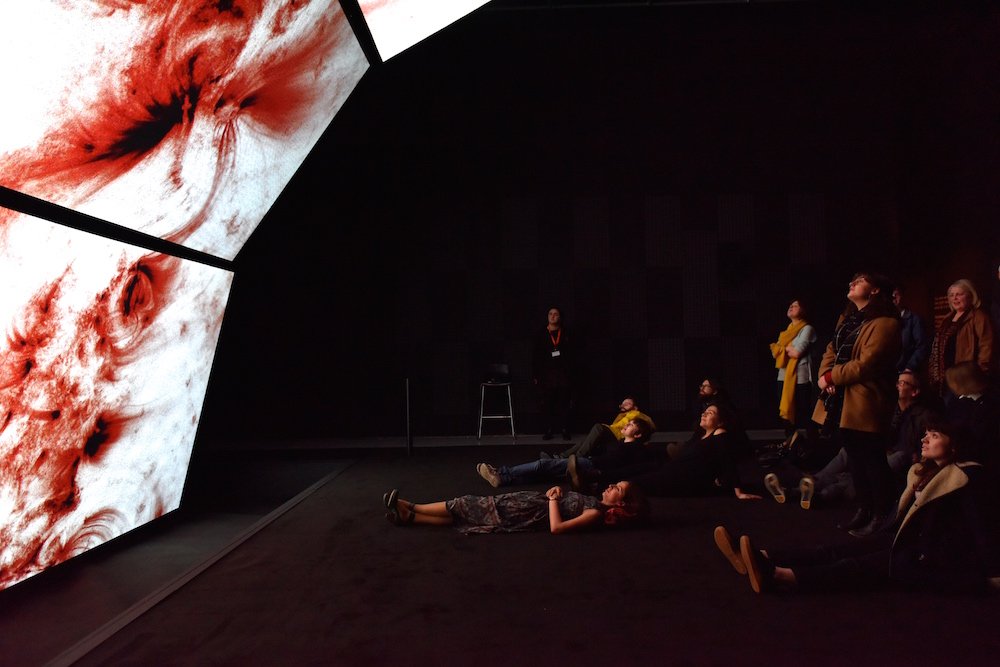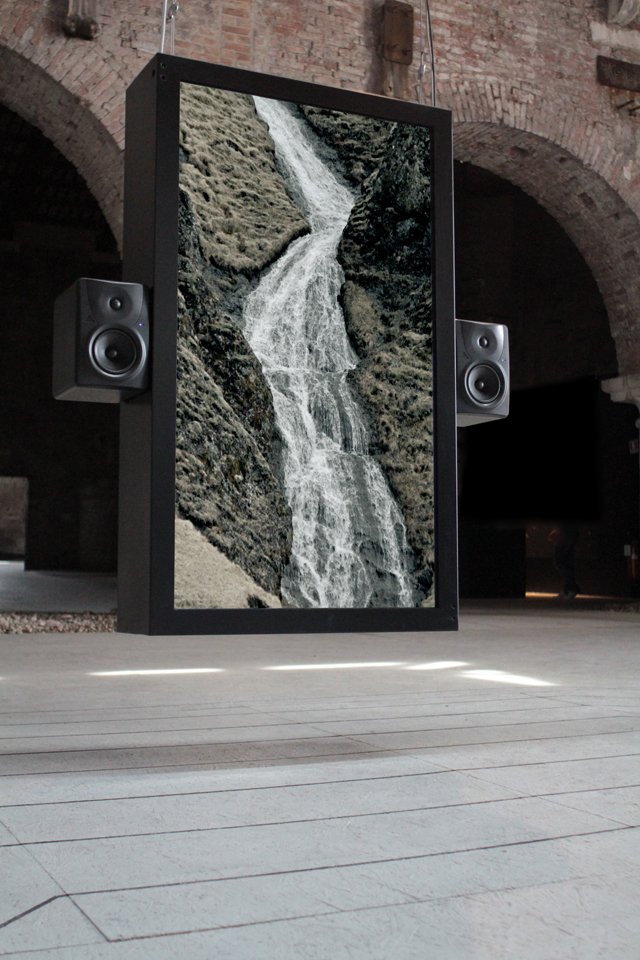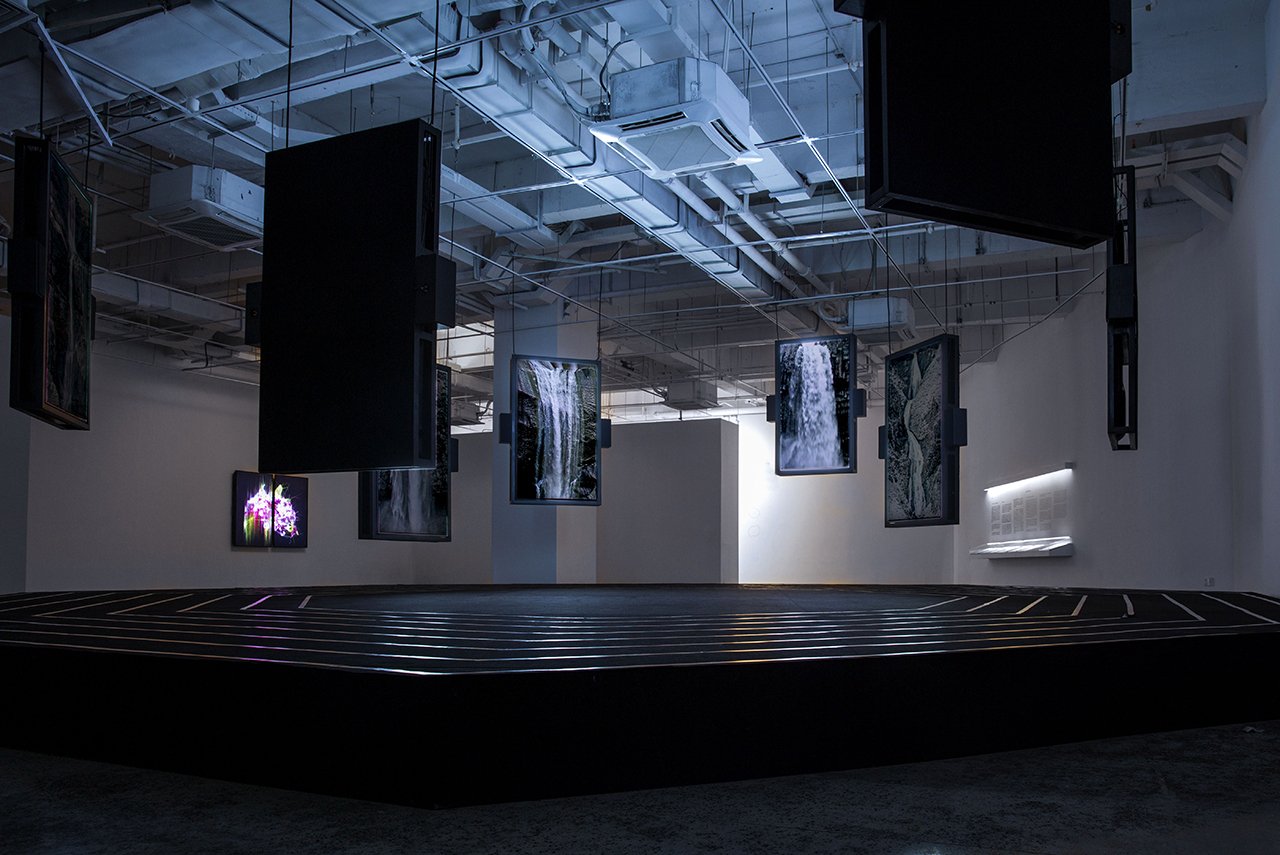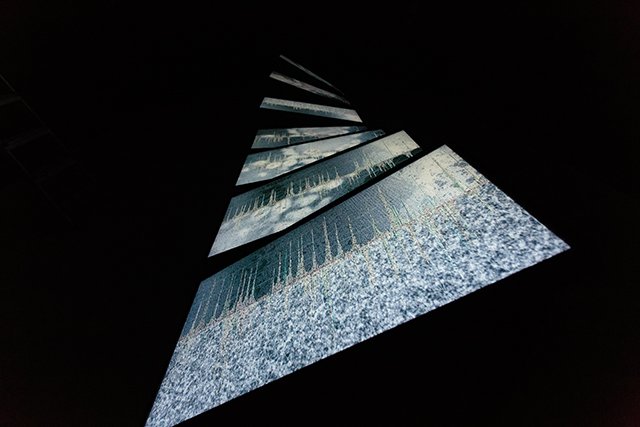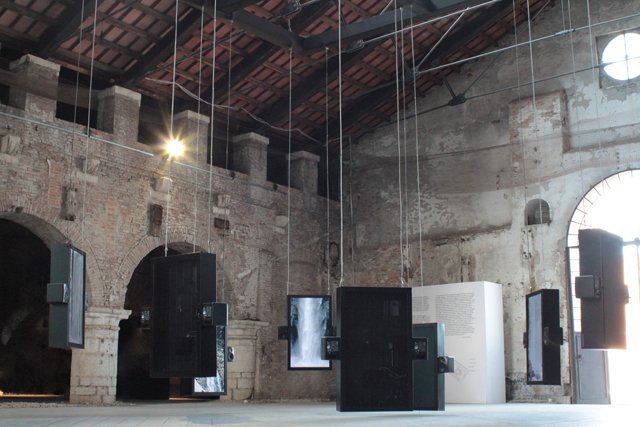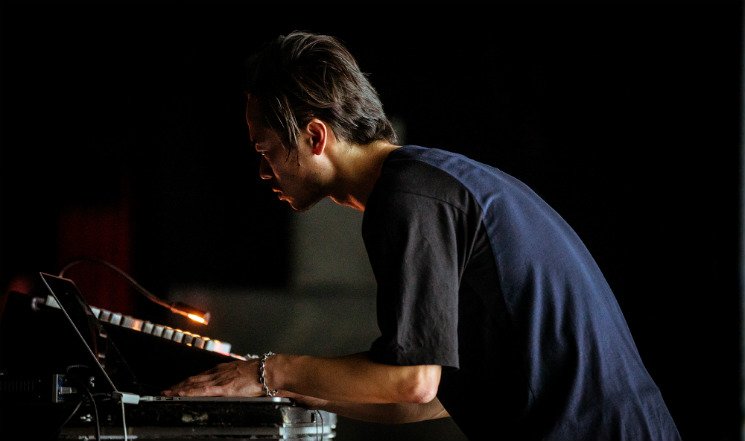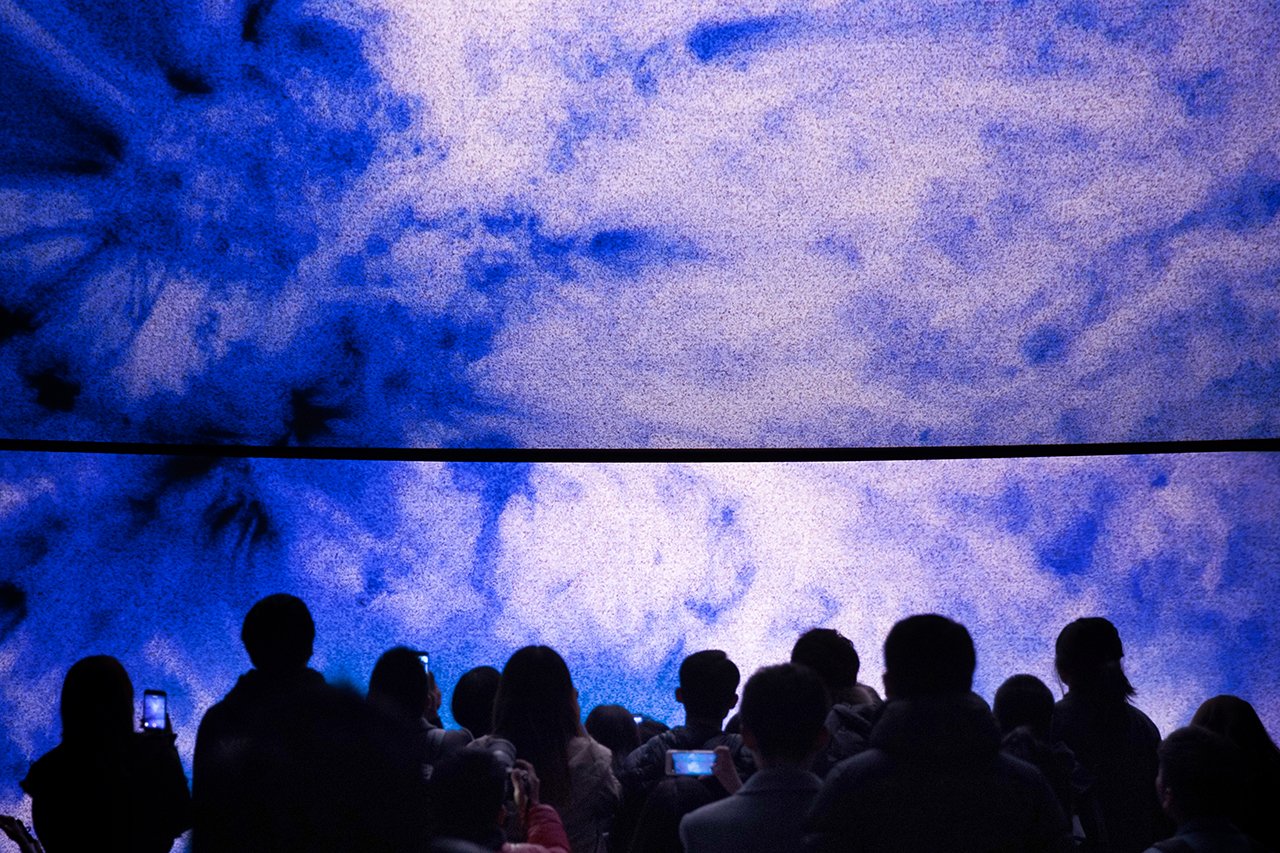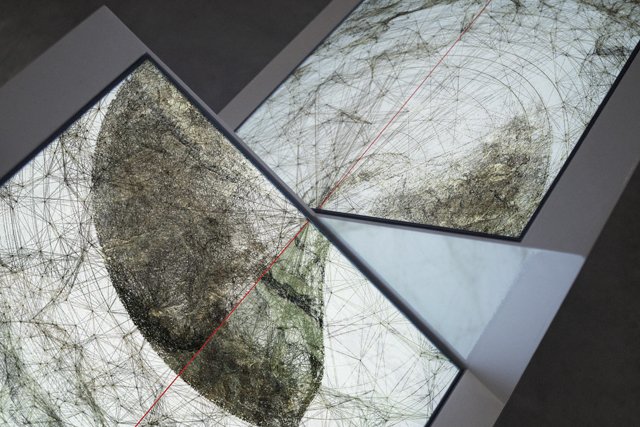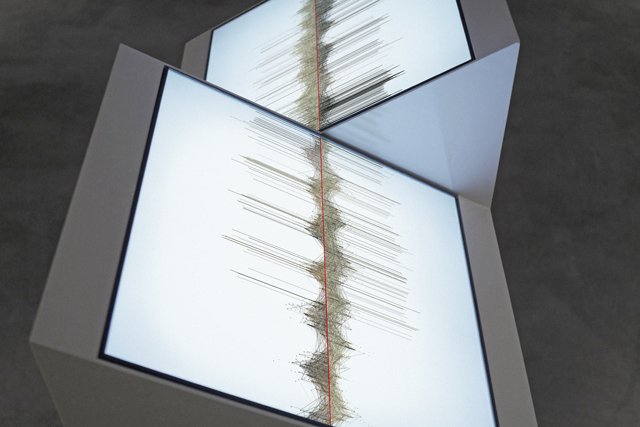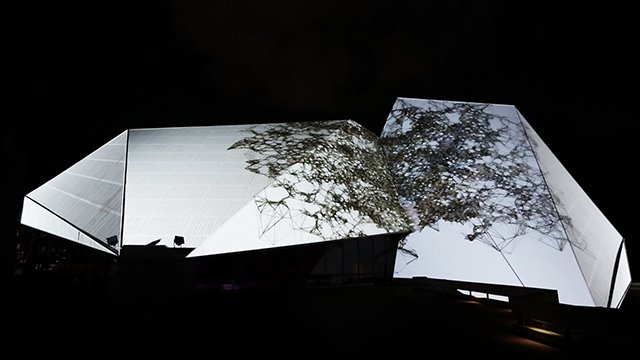Ryoichi Kurokawa|Japanese avant-garde artist - an audio-visual poet in the era of integration of technology and art, "I'd like to provide inspiration and awakening to the viewers"
theFOUND Virtual Art Center this TALK with Ryoichi Kurokawa, the Japanese artist Ryoichi Kurokawa (born in 1978), created unique audio-visual works by using different media, such as video, installation, recording and live performance. He is a pioneer in this field and has exhibited and performed all over the world since 1999. He described his work as "time-based sculpture" and considered sound and image as a whole. His works are actually various combinations: the reverberation of sound is created and recorded, and then combined with video materials and computer special effects to change the audience's view of familiar things.
Whether it is to eliminate the white noise of the waterfall sound, form a holy and pious peace around the audience, or combine the field recording with the minimalist pulse generated by the computer, and coexist harmoniously in an inharmonious world full of war and destruction, ryichi Kurokawa creates and presents an audio-visual language that combines complexity and simplicity.
In 2010, ryichi Kurokawa won the golden Nica Award for digital music and sound art at the Prix ARS electronica. With the judges of the award In the words of Naut humon, founder of rhythm & noise: "In a sense, ryichi Kurokawa is a model leading the trend in his field, a pioneer in defining aesthetics, and a guide for others. His exploration has an amazing diversity, and the output of his works seems endless. He is an artist who transcends the subject type and constantly changes the old ideas about electronic image expression."
Ryichi Kurokawa has released many CDs and collaborated with musicians such as "human audio sponge" (former members of the Yellow Magic Orchestra). He has held exhibitions or participated in performances in many international art institutions and festivals, such as the Tate Modern Art Museum in London, the 54th Venice Biennale, the Berlin hypermedia Art Festival (transmediale), the California mutek electronic music festival, the Shanghai Electronic Art Festival, the Barcelona sonar Music Festival (sonar), etc. at present, ryichi Kurokawa lives and works in Berlin, Germany.
theFOUND & Ryoichi Kurokawa
Q1:
Since 1999, you have been using different creative media (including video recording, installation, recording and live performance). At that time, you were only 21 years old. At the beginning of the 21st century, you have started interdisciplinary art research and exploration. How did you come up with such a creative idea?
Design field such as industrial/architecture/mode/graphics, influenced me in the first place when I was a teenager. I think design was one of the triggers to have interest on visual expression and leaded me to make artworks. I don’t have any background in studying art, music or design. I started making artworks in the late 90s when I was student, and it was just for pleasure and to share outputs with my friends. At that time, I had no intention of researching seriously, simply I was just immersed in the creation. Perhaps because I was not educated in art or music and I didn't intend to be an artist, I might be able to create more freely for that reason.
Q2:
In a sense, you can be described as a model leading the pioneer in this field. As an interdisciplinary artist, you transcend the subject type and constantly change the old concepts expressed by electronic images. What drives you to constantly try new things, challenge and break through your creative boundaries?
Although I think the core of my art creation has not changed much since the beginning of my career, I'm always trying to introduce new elements in terms of expressions and tools into my works. This is for putting me in a situation where I must learn myself and keep myself excited. In general, to avoid expectable outcome, I try to employ some new components I have never applied or technology I don't know into my new pieces otherwise it is hard to always keep up motivation on creation. I want to avoid loss of time by spending a year doing the same thing over and over again.
Q3:
The visualization of data enables the audience to immerse in the exploration of macro and micro and even synaesthesia, as well as the collision between macro and micro. This experience allows the experimenter to redefine the audio-visual senses, thus refreshing the audience's view of the things they are familiar with every day. You said that you pay attention to the experience of the current audience. What kind of experience and inspiration do you hope your works can bring to the audience?
I want to provide inspiration rather than to deliver specific messages or information. I don’t want to lead by verbalizing except for audiovisual language. It can be freely interpreted in different ways by the audience. Getting colorful feedback from viewers is my pleasure. I’m trying to let viewers think through its experience or to provide a trigger or awakening.
Q4:
Nature, celestial bodies, matter, ability, frequency and vibration are important elements of your creation. Where do you usually get inspiration? Which art project is of milestone or special significance to your art career?
Nature inspires me a lot. It has been habitually triggered to go into action for me, not only for creation. I often use nature as motives since one of my main axis of creation is reconstruction of nature such as physical phenomena and natural law. Reconstruction of nature: deconstruct and rebuild, is one of my main axises. And another is providing multi-sensory/synesthetic experiences. These 2 themes underlie concepting. It is difficult to give you a special significance piece to my art career. I have both like and dislike aspects on all my artworks, it’s difficult to order them. At the moment when I complete artwork, I’m convinced in some way. However soon afterwards, I feel dissatisfied at some points over time, artist can be the most critical on their own artwork than anyone.
Q5:
Your work changes people's perception of familiar things, captures separated images with keen perception, then re edits them, and mobilizes the audience's senses and subconscious. How do you observe the world? What part of the creative process excites you? How do you understand the relationship between sound, vision and human senses?
I believe that my perception of the world is quite common as average person observes. I do not perceive, see or hear anything in particular way. Although I create artworks to provide synesthetic experience, I am not a synesthete myself. The most excitement on the creative process is probably when I start thinking about the work and my brain starts moving into its vector. I often don’t consider sound and images separately. Especially when I'm conceiving an idea for audiovisual pieces, I draw integrated audiovisual events in my head. I treat sound and image as a single unit. However, it's for making artwork. My input of information is general, probably its process and output might be bit irregular.
Q6:
Your works have great energy and influence on others. They can improve the frequency of audience experience, inspire others, and make people think and wake up. What kind of mission do you think artists need?
The mission of artists can be as diverse as changing existing values, transforming society, or defining beauty anew etc. I think artists need to keep being creative and inspire others. However, because I personally don't think I have to remain an artist myself, I don't think I must be creative all the time.
Q7:
Artists carve time and space with carefully assigned visual pictures and sound changes. The audience will quietly taste the humanistic poetry behind the digital technology, just like they do at the concert. However, technology sometimes makes the public feel afraid and uneasy, and artists can always get new inspiration from technology. Excessive technology will make people lack human feelings. How do you balance the relationship between technology, humanity and art?
Technology doesn't always make me feel scared and uneasy. It extends not only the creation but also perception of art, it provides many possibilities in art field. Technology is playing a very important role on my works, but I’m considering them as tools for my art pieces. I’m always trying to avoid just demonstrating technology, trying to prevent producing superficial work which just gives an impact by the use of technology.
Q8:
As a representative artist in this field of Japan, you have inspired a large number of Japanese artists in this field, and have had a great impact and leadership internationally. Looking back on your artistic career since 1999, how did you overcome the bottleneck and difficulties? What do you think of the gradual commercialization of interdisciplinary art? What advice do you have for young artists who appreciate your artistic creation and young people who love art?
As for the art being commercialized, I don't feel that anything special about it. Since commercializing of anything has always been around for a long time, I am not really affected by that situation now. I rather feel that by the time it is commercialized, it has already become old-fashioned. What I can say to young artists is that keeping thinking and creating and experiencing many things are crucial fuel for their creation in future.
Q9:
In the future, what new ideas do you want to practice and create greater artistic influence and social value?
Thinking new ideas is a sort of a part of my daily routine. I'm generally running several new projects in parallel, but basically as a core I pursue audiovisual composition even if it's a large scale installation or simple composition. I do not think much about social value in the larger sense. Rather than artistic influence on the industry, I'd like to provide inspiration and awakening to the viewers, and to lead them to deliberate.
